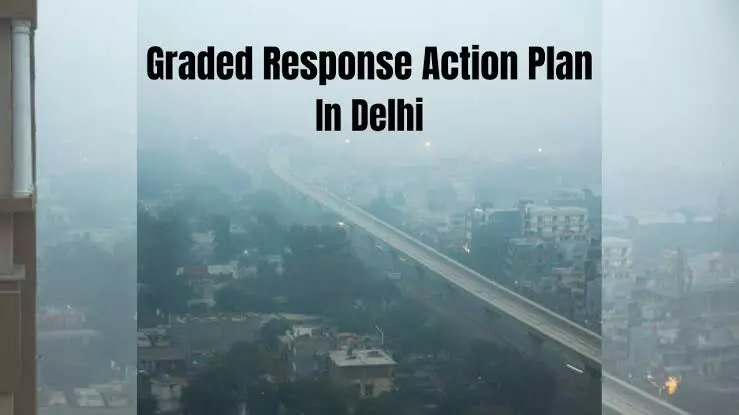Is Delhi’s Winter Action Plan a Breath of Hope for Cleaner Air?
Aam Aadmi Party (AAP) government has introduced a comprehensive Winter Action Plan with renewed hope.;

With winter knocking on Delhi's door once again, residents can hardly help but be prepared for another bout of the smog that has turned into an uninvited seasonal ritual. Year after year, chillier months push pollution to the sky-high levels, so the very air we breathe is hazardous. But this year, the Aam Aadmi Party (AAP) government has introduced a comprehensive Winter Action Plan with renewed hope. Perhaps, it will be the plan for dust control, waste management, traffic congestion, and much more that Delhi needs to survive. The question is, will it work? And if it does, could it be a model for other cities facing similar battles against pollution?
The winter pollution crisis in Delhi is driven by a mix of industrial emissions, vehicle exhaust, dust from construction, and seasonal stubble burning in nearby states. This is a problem that gets worse with each passing year, and for Delhiites, it's not just an environmental issue but a public health emergency. The government's Winter Action Plan recognizes this and has planned to address the issue from multiple angles. This is not a matter of Delhi alone," Delhi’s Environment Minister Gopal Rai said. "The problem is regional and requires cooperation across borders." This statement brought to the fore that solution to stubble burning in villages, which is responsible for a large portion of what Delhi breathes in polluted air, cannot be dealt with in isolation, working within city limits.
For dust control, this forms a major part of what the plan focuses on-it is one of the major contributors to overall polluting levels in the city. Strategies include using anti-smog guns, sprinkling treated water on the roads, and mandating that construction sites be covered. Dust alone contributes to a large extent in our pollution, and controls can make a definite impact. Managing the particulate loads created by construction and from roads can really reduce it by a great extent and it is particularly during traffic hour.
The plan is supposed to cut emissions through reduction in emissions from vehicles, traffic congestion by expanding road networks and sterner checks on polluting vehicles. Traffic jams not only increase emissions but trap pollutants close to the ground. This scientific approach to traffic management marks a shift in how the city views pollution—not merely as an infrastructure or transportation issue but as a threat to sustainable urban life.
The winter action plan of Delhi doesn't limit to the city walls. Recognizing the impact of stubble burning on the national capital’s air quality, the AAP government continues discussions with neighboring states to seek alternatives for farmers. “We are actively working on providing subsidies for bio-decomposer solutions and pushing for alternatives to stubble burning," said Gopal Rai. These efforts could cumulatively reduce the pollution spilling across state borders, underscoring the importance of regional cooperation to enhance air quality.
Better waste management is another pillar of the plan. The state government will promote waste segregation, encourage bio-decomposers, and tackle emissions from landfills in this regard. Waste management is not about dustbin disposal; it's about cutting down on harmful fumes that emanate from it. However, for such initiatives to last the test of time, what is more important is when the public buys into its cause.
Finally, the plan is to enhance the green cover of Delhi by carrying out massive tree plantation drives. As trees are nature's own air filters, and thereby improves the quality of life of the residents; this afforestation drive is a reminder of how nature itself can play a role in protecting the urban environment.
While the Winter Action Plan might look promising, it can only be delivered with strong performance, public education, and accountability. The strictest monitoring mechanisms, transparent reporting, and community-led initiative may be crucial in delivering meaningful solutions. More importantly, Delhi's efforts must break away from mere seasonal solutioning because long-term commitment is needed to address air pollution, a need for steady investment into infrastructure, public health, and environment-friendly policies well beyond annual plans.
If correctly implemented, the Winter Action Plan of Delhi can serve as a prototype of urban centers across India combating similar seasonal pollution issues. This plan underlines the fact that the issue goes beyond mere environmentalism; it is health and well-being of people, planning, and change in policy. By choosing holistic and scalable solutions, cities can ensure sustainable futures with the guard of health and well-being of citizens.

